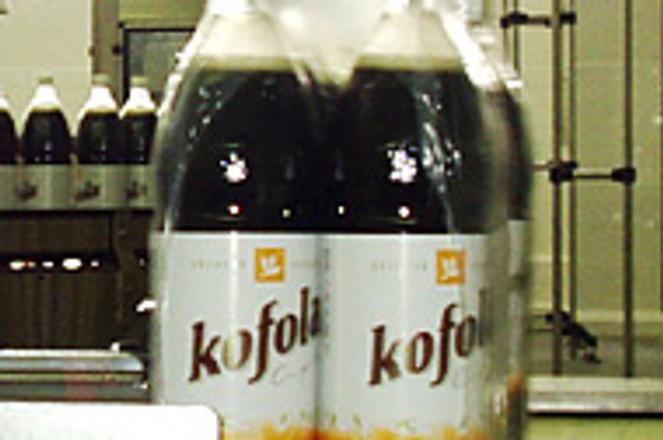KOFOLA has to put up with many imitators.photo: Courtesy of Kofola
IF THERE is one symbol of childhood and long hot summers in the Czech Republic and Slovakia, it is Kofola, the popular drink that people mistake for a type, rather than a brand, of liquid refreshment. Understandably, it faces stiff competition from its rivals and imitators.
The Kofola company has been operating in Slovakia as a fully-owned subsidiary of its Czech mother firm since 1998. It was so successful that in 2002, it opened its own production facility in Rajeská Lesná near Žilina, which now employs about 230 people in Slovakia.
"We decided to build the facility because the Czech factory couldn't fulfil the requirements of the Slovak market. We've based the factory on the traditions of its Czech counterpart," Miroslav Majerčák, the general director of Kofola in Rajecká Lesná told The Slovak Spectator.
The company develops, produces and sells soft drinks and syrups. The most popular product is Kofola, which is rather like Coke and Pepsi.
Apart from expansion, the company would also like to strengthen the position of its trademarks. "We have started to strengthen the Kofola trademark to distinguish it from the various imitators," said Majerčák.
According to Majerčák, the trend towards a healthy lifestyle and the increased consumption of juices and mineral waters represents a great market opportunity.
This was one of the reasons why Kofola introduced a new low-mineralised spring water to its portfolio this year.
"Over the last five years the market in Slovakia for mineral, spring and table waters has almost doubled. However, people still drink less of these than in other European states, even the Czech Republic," he explained.
Kofola invested an initial Sk250 million (€6.25 million) in the Rajecká Lesná plant. Capacity at the plant is about 4 million bottles annually. And the company invested approximately Sk100 million (€2.5 million) in the new mineral water project.
Total company sales reached Sk579 million (€14.47 million) last year. The domestic market accounted for Sk494 million (€12.35 million) which was up 62 percent on the previous year, the news agency SITA wrote. The remaining Sk85 million (€2.12 million) were exports to the Czech Republic and Hungary.
According to a market survey by the AC Nielsen agency last year, the company's share of the carbonated soft drinks market in Slovakia represented 17.48 percent, thus overtaking international trademarks such as Coca-Cola and Pepsi.
Last year the Rajeská Lesná plant produced 26.33 million litres of Kofola. The company is the third largest soft drink producer in Slovakia, with an 8.14 percent of the total soft drinks market.
Majerčák considers the business environment in Slovakia as favourable and thinks that the government should keep on track, mainly in the field of taxes and the protection of investments. "I appreciate steps to reform tax policy but there are areas where things could improve, especially in law enforcement," he added.
The Kofola name is one that reminds Czech and Slovak citizens of their unique common heritage. " I think the name of the company is almost a symbol of our former state " concluded Majerčák.
Where Kofola came from
The cola-like soft drink Kofola was invented at the end of the 1950s in the then Czechoslovakia during research into ways to use coffee soot, the residue left after roasting coffee beans.
The company Galena, now Ivax-ČR, was the only producer of the syrup. It consists of 14 ingredients, including sugar, caramel, cardamom, cinnamon, caffeine and others.
As the only domestic soft drink in Czechoslovakia, it became a hit in the 1960s.
After the split of Czechoslovakia in 1993, the Czech Republic kept the trademark as well as the licence.
In Slovakia many companies have been producing Kofola-like soft drinks with names resembling this established name, which has resulted in a series of trademark lawsuits.
Source: SITA

